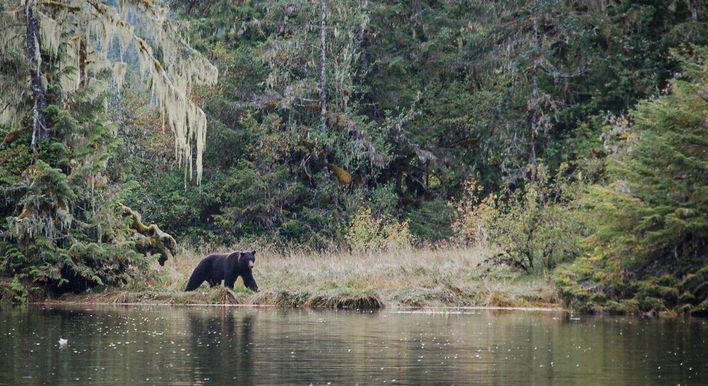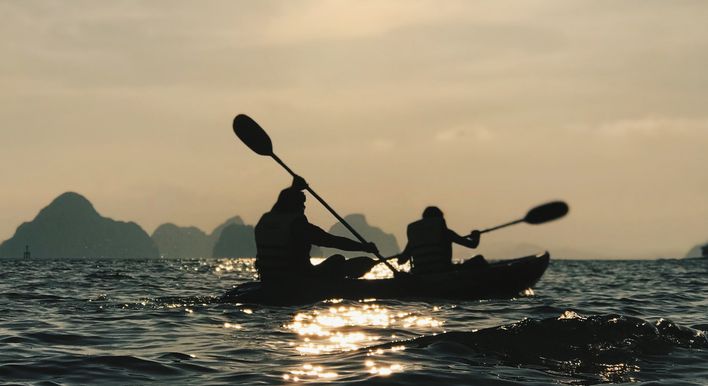House of Light
The Pacific Northwest region of the United States is known for its stunning landscapes, including its picturesque coastline dotted with numerous lighthouses. These structures have played a significant role in maritime navigation for centuries and are an integral part of the region’s history and culture.
A tour we think you'll love
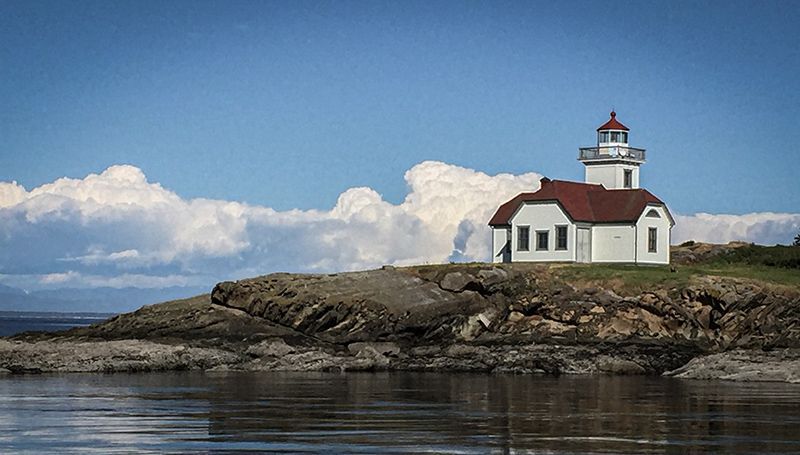
Lighthouses have been used for centuries to help mariners navigate their way through treacherous waters, especially in areas where weather and geographical conditions make navigation difficult. The Pacific Northwest region of the United States, with its rugged coastline, rocky shores, and numerous islands, has always been a challenging area for navigation. The first lighthouses in the region were built in the early 19th century to help ships navigate through the dangerous waters of the Columbia River and Puget Sound.
The first lighthouse in the Pacific Northwest was built in 1856 on the southern tip of Cape Disappointment, Washington. The lighthouse stands at a height of 53 feet and has a range of 22 miles. This lighthouse was built to guide ships through the treacherous waters at the mouth of the Columbia River, which had become a major shipping channel for the region. The lighthouse was initially built as a wooden structure, but it was later replaced with a brick tower in 1898. The lighthouse is now open to the public as a museum and tourist attraction.
The next oldest lighthouse in the region is the Cape Flattery Lighthouse, which was built in 1857 at the northwestern tip of the Olympic Peninsula. The lighthouse stands at a height of 68 feet and has a range of 19 miles. Built to guide ships through the dangerous waters around Tatoosh Island, which is located at the entrance of the Strait of Juan de Fuca the original lighthouse was a wooden structure, but it was replaced with a concrete tower in 1904.
Most of the lighthouses in the Pacific Northwest were built by the federal government. The United States Lighthouse Board was responsible for the construction and maintenance of lighthouses in the region. Many of the lighthouses were designed by prominent architects and engineers of the time, including Carl W. Leick, who designed the Cape Flattery Lighthouse, and James Kell, who designed the Yaquina Head Lighthouse in Oregon.
Functional Monuments
Although many of the lighthouses in the Pacific Northwest are no longer used for their original purpose, they still hold significant historical and cultural value. Many of the lighthouses have been preserved and are open to the public as museums or tourist attractions. Some lighthouses, such as the Grays Harbor Lighthouse in Westport, Washington, and the Yaquina Bay Lighthouse in Newport, Oregon, still function as aid to navigation and are maintained by the U.S. Coast Guard.
Lime Kiln
The Lime Kiln Lighthouse, located on the western side of San Juan Island in Washington State, is a beloved local landmark and a must-see for visitors to the island. Built in 1919, the lighthouse played a vital role in guiding ships through the treacherous waters of the Haro Strait and marking the entrance to the Strait of Juan de Fuca.
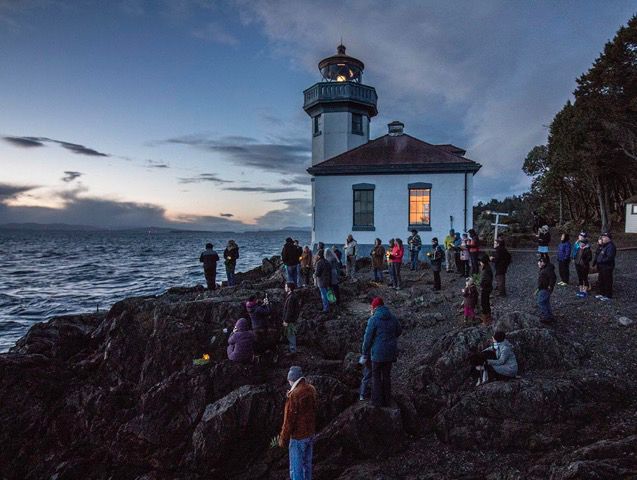
The history of the Lime Kiln Lighthouse dates back to the mid-19th century, when lime mining was a major industry in the San Juan Islands. Lime was used in the construction of buildings, roads, and ships, and the islands were home to several large lime kilns that produced high-quality lime from the local limestone. The Lime Kiln Lighthouse was named after the nearby lime kilns, which were a prominent feature of the area in the late 1800s.
In the early 1900s, the US Lighthouse Service recognized the need for a lighthouse on San Juan Island to aid navigation in the busy waters of the Haro Strait. The site chosen for the new lighthouse was on the site of the old lime kilns, and construction began in 1918. The lighthouse was completed the following year, and the first light was lit on June 30, 1919.
The Lime Kiln Lighthouse was an important aid to navigation for many years, guiding ships safely through the Haro Strait and marking the entrance to the Strait of Juan de Fuca. However, advances in technology eventually made the lighthouse obsolete, and it was decommissioned in 1962.
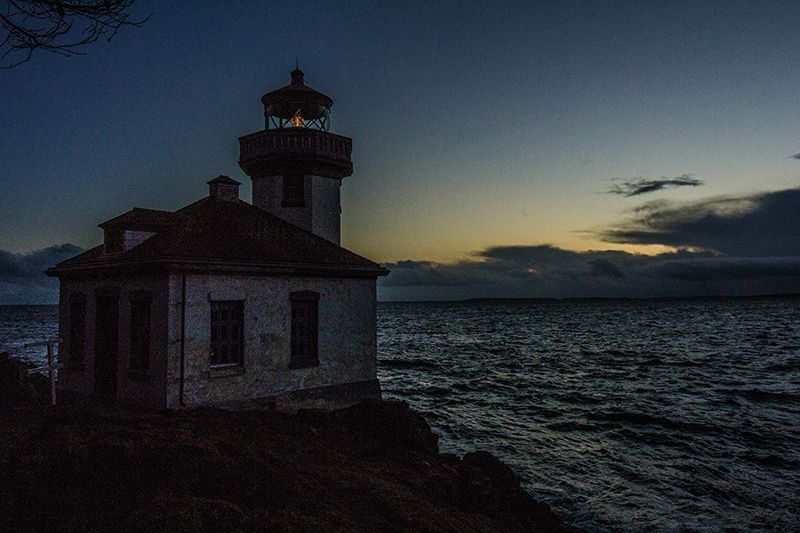
Today, the Lime Kiln Lighthouse is a popular tourist destination and a beloved local landmark. The lighthouse has been restored to its original condition and is open to visitors. The site also includes a small museum with exhibits on the history of the lighthouse and the local area.
In addition to its historical significance, the Lime Kiln Lighthouse is also an important site for whale watching. The waters around San Juan Island are home to several species of whales, including orcas, and the Lime Kiln Lighthouse offers one of the best vantage points for observing these magnificent creatures.
The lime mining industry that once thrived on San Juan Island is now a thing of the past, but the legacy of that industry can still be seen in the Lime Kiln Lighthouse and the surrounding area. The lime kilns that once dotted the landscape have been replaced by parks and trails, and the Lime Kiln Lighthouse serves as a reminder of the island’s rich history.
Patos Island Lighthouse is a historic lighthouse located on Patos Island, one of the San Juan Islands in the state of Washington. The lighthouse was first lit in 1893 to help guide ships through the Haro Strait, which is known for its strong currents and rocky shores.
The original lighthouse structure was a wooden tower that stood at a height of 38 feet. It was later replaced with a concrete tower in 1960, which still stands today. The lighthouse tower is painted white and has a red lantern room at the top, which emits a flashing white light every 10 seconds. The lighthouse was automated in 1974, and the keeper’s quarters were decommissioned. The site is now managed by the Bureau of Land Management as part of the San Juan Islands National Monument. The lighthouse and surrounding buildings have been restored and are now open to the public as a museum and tourist attraction.
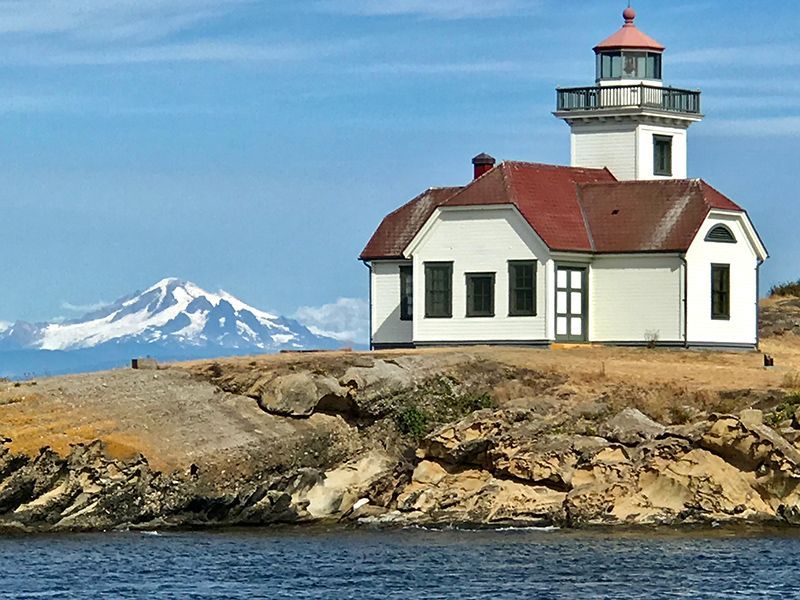
Visitors to the Patos Island Lighthouse can tour the lighthouse tower and keeper’s quarters, which have been restored to their original condition. The keeper’s quarters include a small museum with exhibits about the history of the lighthouse and the San Juan Islands. Visitors can also explore the island’s hiking trails and scenic views, which offer a glimpse into the natural beauty of the region. Patos Island Lighthouse is listed on the National Register of Historic Places.
The Stuart Island Lighthouse, also known as the Turn Point Lighthouse, is located on Stuart Island in the San Juan Islands of Washington State. The lighthouse was built in 1893 to guide ships through the Haro Strait, which is known for its strong currents and rocky shores.
The original lighthouse structure was a wooden tower that stood at a height of 35 feet. It was later replaced with a concrete tower in 1935, which still stands today. The lighthouse tower is painted white and has a red lantern room at the top, which emits a flashing white light every 10 seconds. The light has a range of 17 miles and is still operational today, although it is now automated and remotely monitored by the U.S. Coast Guard.
The keeper’s quarters were decommissioned in the 1970s and are now privately owned. The site is accessible to the public by boat or hiking trail and is a popular destination for boaters and hikers exploring the San Juan Islands. With its unique location on a remote island and its stunning views of the Haro Strait and surrounding islands it attracts many visitors to the tower and surrounding buildings, which have been restored and are now maintained by the Bureau of Land Management.
Cattle Point Lighthouse – Located on the southern tip of San Juan Island, this lighthouse was first lit in 1935 to guide ships through the Haro Strait. The lighthouse is now maintained by the U.S. Coast Guard and is closed to the public. located on the southern tip of San Juan Island, Washington, and was first lit in 1935. The lighthouse tower is 34 feet tall and is made of concrete, painted white, and has a red lantern room at the top that emits a flashing white light every 10 seconds. The light has a range of 14 miles and is still operational today, although it is now automated and remotely monitored by the U.S. Coast Guard.
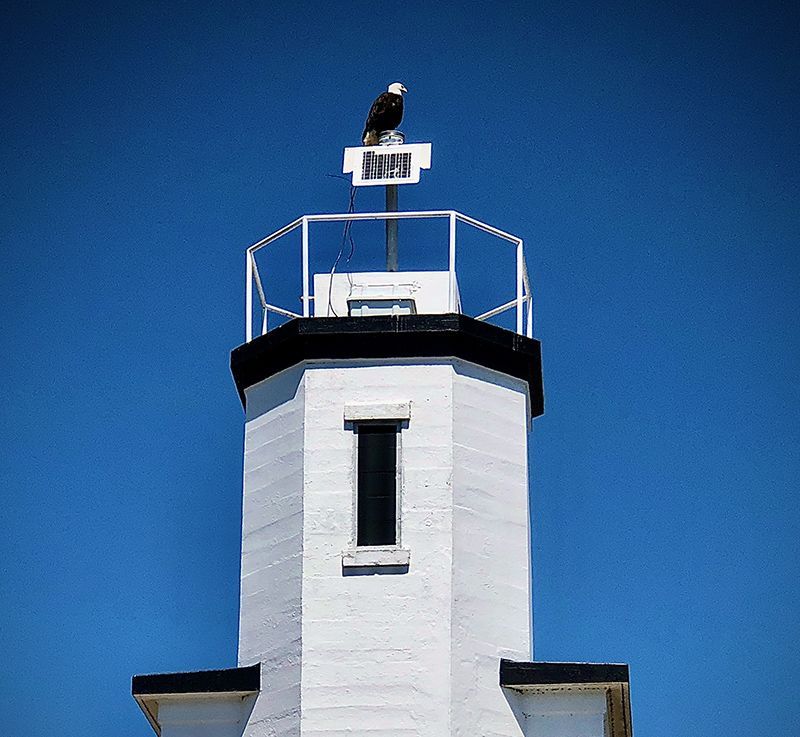
The Cattle Point Lighthouse is situated on a promontory overlooking the Haro Strait, which is known for its strong currents and rocky shores. The location of the lighthouse has made it an important aid to navigation for ships traveling through the strait. The surrounding area is also home to a variety of wildlife, including bald eagles, harbor seals, and sea lions.
In addition to the lighthouse, the Cattle Point area is also home to a historic power station building. The building was constructed in 1905 to provide electricity to the American Camp military reservation, which was located nearby. The power station building is a two-story structure made of concrete and brick and is now listed on the National Register of Historic Places.
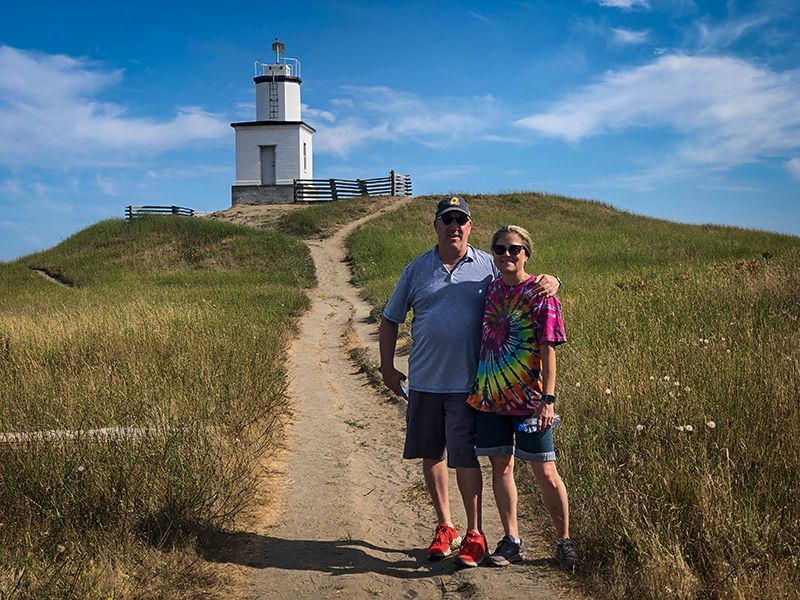
The power station building was decommissioned in the 1930s and was used for various purposes over the years, including as a storage facility and a workshop. In 2009, the building was restored and converted into a public meeting space and interpretive center. The center features exhibits about the history of the area and its natural and cultural resources.
Visitors to the Cattle Point Lighthouse and power station building can explore the surrounding area and learn about the important role that the lighthouse and power station played in the history and development of San Juan Island. The area is a popular destination for hiking, picnicking, and wildlife viewing, and offers stunning views of the Haro Strait and surrounding islands.
Lopez Island Lighthouse – Located on the southern shore of Lopez Island, this lighthouse was first lit in 1909 to guide ships through the San Juan Channel. The lighthouse is now privately owned and is not open to the public.
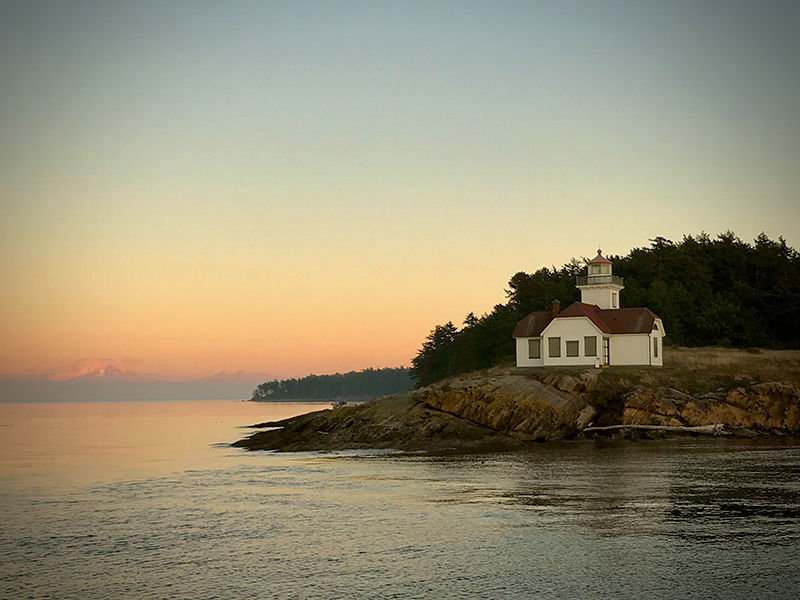
Waldron Island Lighthouse – Located on Waldron Island, this lighthouse was first lit in 1890 to guide ships through the Boundary Pass. The lighthouse is now privately owned and is not open to the public.
The San Juan Islands are a popular destination for boaters and hikers, and the lighthouses in the region are an important part of the area’s maritime history and culture. Visitors to the islands can explore these historic landmarks and learn about the important role that lighthouses have played in navigation and safety in the Pacific Northwest.


